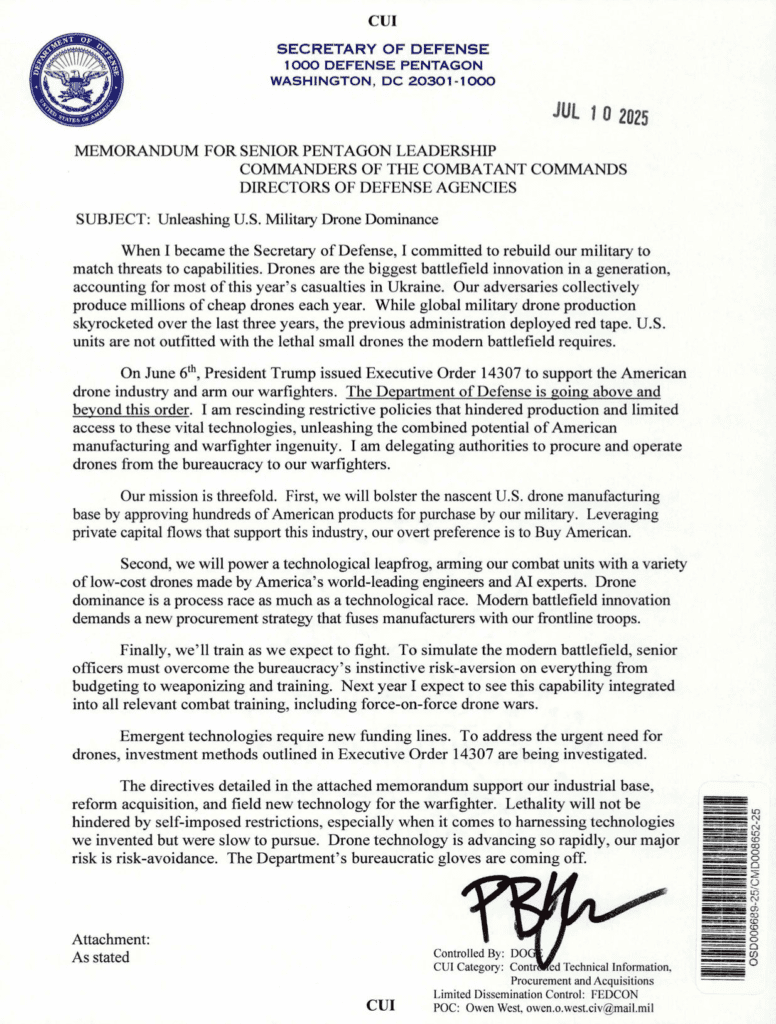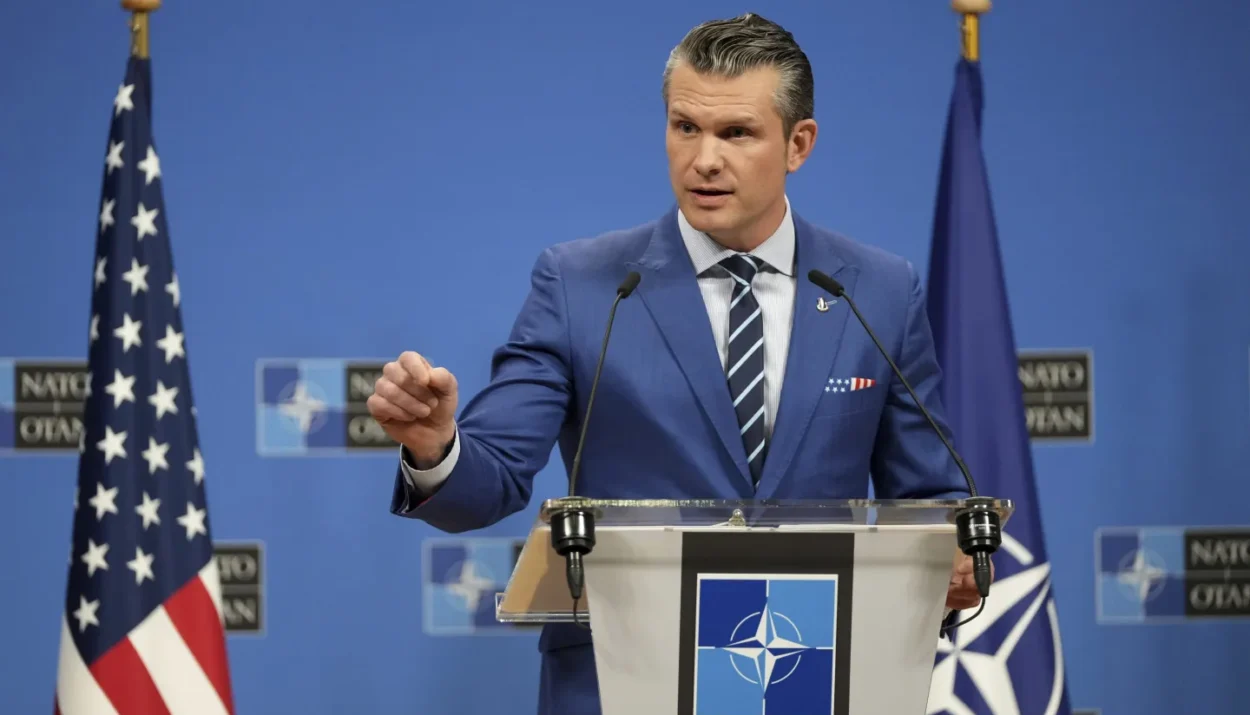Declaring that “lethality will not be hindered by self-imposed restrictions,” US Defense Secretary Pete Hegseth on Wednesday signed sweeping directives aimed at turning small drones from boutique gadgets into battlefield staples.
The twin memos tear up procurement limits dating back to 2021–22 and order frontline commanders to treat Group 1 and 2 drones more like rifle rounds than aircraft.
From red tape to “consumables”
- Every US Army squad must carry one-way FPV attack drones by the end of fiscal 2026, with Indo-Pacific units at the front of the line.
- All drones under 55 lbs are now classified as “consumable commodities”—no more loss investigations if a quadcopter slams into a tree or explodes on impact.
- Colonels and Navy captains can immediately buy and test commercial or 3-D-printed systems without Pentagon sign-off; weapons-board reviews of arming requests are capped at 30 days.
- Three national test ranges will open within 90 days to host live-fire swarms and electronic-warfare drills; “drone wars” become mandatory in major exercises next year.
- A new AI-driven “Blue List” of vetted components and vendors will go live in 2026, updated nightly with performance data.
Hegseth also scrapped a 2022 memo that had tightly limited use of public-purchase cards for off-the-shelf drones and a 2021 policy that had extended congressional bans on Chinese systems to cover virtually any foreign part. “Those rules were more restrictive than the law,” one Pentagon official told Breaking Defense, calling them “overly burdensome” for units that need drones now.
Why the rush?
Senior officers say the decision follows hard lessons from Ukraine, Gaza and the Red Sea, where cheap “kamikaze” drones have hit armor and infrastructure at a fraction of the cost of missiles. Russia’s Iranian-made Shahed-136 and Ukraine’s home-built FPVs have reshaped tactics; US planners fear falling behind.
“Small UAS resemble munitions more than high-end airplanes,” Hegseth wrote. “They should be cheap, rapidly replaceable, and categorized as consumable.”
Under the new rules, the Army’s fledgling Purpose-Built, Attritable Systems program—aiming to buy up to 10,000 sub-$2,000 drones within a year—becomes a cornerstone of a larger push to flood the force with swarming aircraft.B
Market ripple: small-cap drone names pop
Drone and defense stocks jumped on the news, with small-cap names seeing fresh bids:
- 🔺 $RCAT (Red Cat Holdings)
- 🔺 $PDYN (Paragon Dynamics)
- 🔺 $ACHR (Archer Aviation)
- 🔺 $ONDS (Ondas Holdings)
- 🔺 $UMAC (United Maritime)
Defense analysts said the memos’ preference for US suppliers, plus promises of advance-purchase commitments and low-interest loans, could channel millions toward small manufacturers that can deliver at speed.
Next steps
The Joint Chiefs have 60 days to rewrite drone-training standards first drafted in 2009, while the services must stand up “experimental formations” to refine tactics by September 1. Pentagon planners say they expect basic FPV proficiency to become as common as marksmanship within two years.
If the effort stays on schedule, Hegseth wrote, the United States will regain “domain dominance” in small drones by the end of 2027. For soldiers on the ground, that means disposable quadcopters may soon sit in the ammo crate—right next to the hand grenades.


Disclosure: This article does not represent investment advice. The content and materials featured on this page are for educational purposes only.
Related:
Tesla Paid for Elon’s Politics — Will the “America Party” Help or Hurt?
Shaken, Not Stirred: Markets brush off Trump’s latest tariff barrage
Wall Street Remains Resilient Amid New Tariff Threats
Trump Slaps 50% Tariff on Copper, Threatens 200% Duties on Pharmaceuticals
Dow, S&P 500, Nasdaq Drop as Trump Slaps 25–40% Tariffs on Trade Partners
Global Stocks Are Crushing US – But Which Ones?
Markets This Week: Tariff Chaos, Fed Clarity, Prime Day, and Earnings Heat Up
Elon Musk Launches ‘America Party’ After Breaking With Trump










